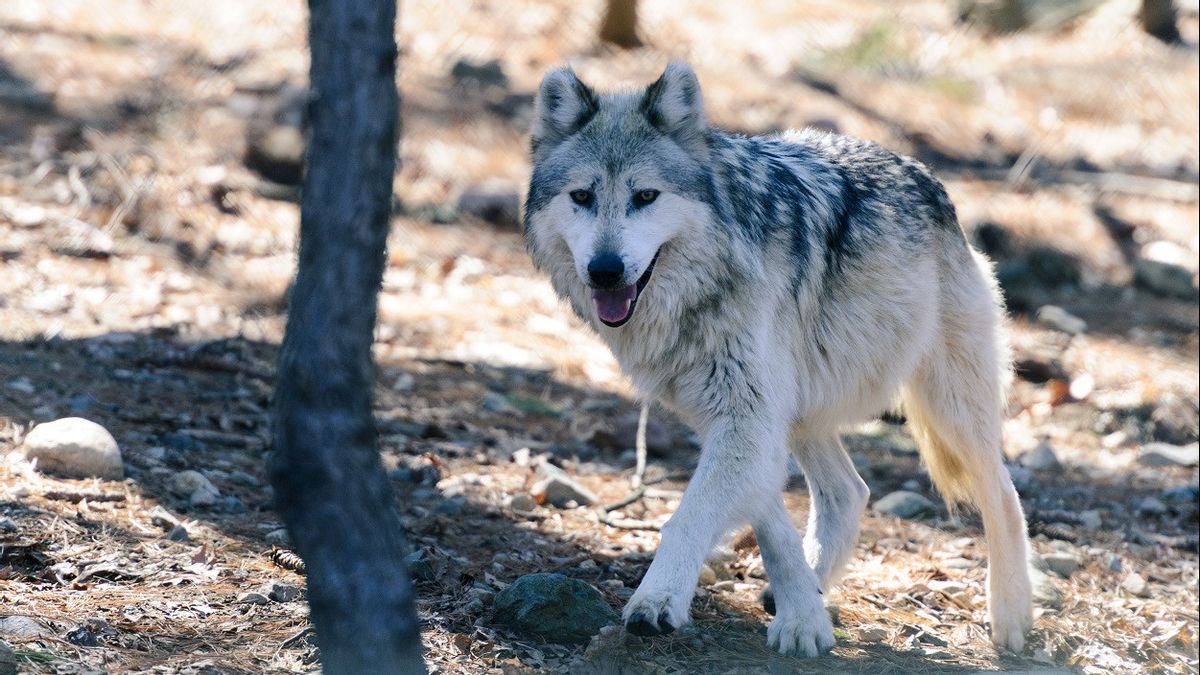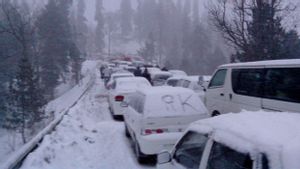JAKARTA - Twenty gray wolves roaming outside the Yellowstone National Park area of the United States have been shot by poachers in recent months, the most in a single season since the predator was returned to the region some 25 years ago.
Fifteen wolves were shot after roaming the park's northern border into Montana, according to figures released to The Associated Press as quoted January 7. Five more wolves died in Idaho and Wyoming.
National park officials said in a statement the death marked a "significant setback for the long-term survival of the species and for wolf research."
One herd - the Phantom Lake herd - is now considered "disappeared" after most or all of its members were killed over a two-month span starting in October, according to the park.
An estimated 94 wolves remain in Yellowstone. But with months remaining into Montana's hunting season, and wolf trapping season just underway, park officials said they expect more wolves to die after roaming from Yellowstone, where hunting is prohibited.

Park Superintendent Cam Sholly first raised concerns last September about wolves dying near the park's borders. He recently urged Montana Governor Greg Gianforte to shut down hunting and trapping in the area for the remainder of the season.
Sholly cited "an incredible number of Yellowstone wolves have killed this hunting season," in a December 16 letter to Gianforte released to the AP under a freedom of information request.
Gianforte, an avid hunter and trapper, did not directly respond to requests to stop hunting in Wednesday's letter to Sholly.
"Once a wolf is out of the park and into land in the State of Montana, it can be harvested in accordance with the regulations established by the Commission (state wildlife) under Montana law," Gianforte wrote.
Gianforte last year received a warning from a Montana hunting warden after trapping and shooting a radio-collared wolf about 16 kilometers north of the park, without taking a state-mandated trapper education course.
In response to Sholly, the governor said Montana protects against overhunting through rules adopted by the wildlife commission, which can review the hunting season if harvest levels reach certain thresholds.

For southwestern Montana, including areas bordering the park, that threshold is 82 wolves. Sixty-four have been killed in the region to date, out of 150 wolves killed across the state, according to Montana Fish, Wildlife, and Parks.
The most recent wolf kill along the Montana-Yellowstone border took place last New Year.
The wolf trap in the area opens on December 21. Under the new rules, Montana hunters can use baits such as meat to lure wolves to kill and trappers can now use snares in addition to foot traps.
"The leeway to trap and especially bait is a major concern, especially if this tactic is to lure wolves out of the park," said Yellowstone spokeswoman Morgan Warthin.
Urged by lawmakers, Montana wildlife officials last year relaxed rules on hunting and trapping wolves across the state. They also removed a longstanding wolf quota limit in areas bordering the park.
The quota, which Sholly asked to return to Gianforte, allowed only a few wolves to be killed along the border each year. The original quota was meant to protect the herd that drew tourists to Yellowstone from around the world, for the chance to see wolves in the wild.

Montana's efforts to make it easier to kill wolves mirror recent action by Republicans and conservatives in other states such as Idaho and Wisconsin. The change came after hunters and ranchers successfully lobbied to reduce the wolf population, which preys on large herds of game and sometimes livestock.
However, the state's increased aggression against predators has raised concerns among federal wildlife officials. In September, the US Fisheries and Wildlife Service said it would examine whether federal endangered species protections should be restored for more than 2.000 wolves in northern US Rockies states including Montana, Idaho, and Wyoming.
To note, protection for wolves in the region was lifted a decade ago, based in part on guarantees that the state would maintain a viable wolf population.
A representative from the hunting industry said outfitters and guides support the preservation of wolves within Yellowstone. But once animals cross the line, continued hunting and trapping should be allowed, said Mac Minard, executive director of the Montana Outfitters and Guides Association.
SEE ALSO:
Minard questioned whether the 20 wolves killed so far this year after leaving Yellowstone should be considered 'park wolves.'
"That doesn't make sense. Why don't they 'Montana wolves' happen to go to the park?" the series.
Marc Cooke with the advocacy group Wolves of the Rockies foresees a backlash against Gianforte and the state for not doing more to protect the wolves that left Yellowstone.
"People love these animals and they make a lot of money for the park. It boils down to the commercialization of wildlife for a small minority of special interest groups," Cooke said.
The English, Chinese, Japanese, Arabic, and French versions are automatically generated by the AI. So there may still be inaccuracies in translating, please always see Indonesian as our main language. (system supported by DigitalSiber.id)


















